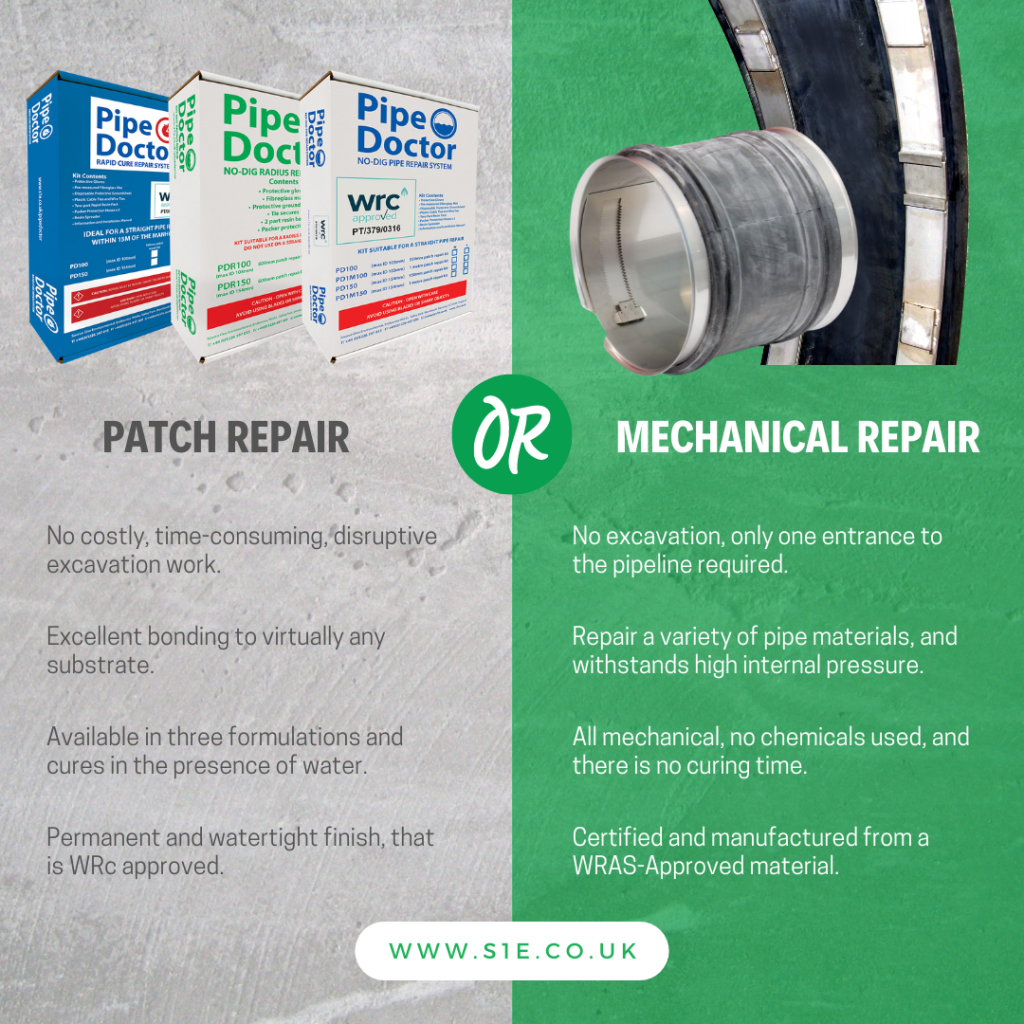Please note we are closed on Friday 18th April 2025, and will be back open Tuesday 22nd April 2025. Any orders placed after 1pm Thursday 17th April 2025 will not be dispatched until Tuesday 22nd April 2025.
Please note we are closed on Friday 18th April 2025, and will be back open Tuesday 22nd April 2025. Any orders placed after 1pm Thursday 17th April 2025 will not be dispatched until Tuesday 22nd April 2025.
Repairing a drain using a structural patch repair system is a common no-dig service that most drainage businesses use. Providing professional contractors with a permanent and watertight finish to damaged pipes, that aren’t costly, time-consuming or require disruptive excavation work.
However, there may be case where a patch repair is not necessarily the answer to your drain repair job. You could be faced with a pipe that has sections broken and missing and you need a structural repair because there is no option for excavation, or you could be working with a pressure pipe or a potable water line, that needs a stronger repair and be made of certified and approved materials.
That’s where a mechanical point repair system becomes your perfect alternative answer to patch repair.
Mechanical point repair systems are made from high-quality and long-lasting materials, such as EPDM rubber and stainless steel. The install requires no curing time and releases no emissions or foul smells. With a swift and simple installation process, just like a patch repair, a mechanical point repair system, doesn’t involve excavation which helps reduce disruption and avoids any lane rental charges.
The systems are an efficient method of sealing pipes that are damaged due to corrosion, displaced joints, tree roots and ground movement, and are manufactured to suit an array of pipe materials including concrete, steel, cast iron, plastic, and glass-fibre.

Thousands of sleeves have been installed globally for repairing the following types of defects in pipe:longitudinal, radial, and circumferential cracks, fragmentation, leaking joints, displacement, or joint misalignment, closing or sealing unused laterals, corrosion, spalling, wear, leaks in the barrel of the pipe, deformation in the pipe and root penetration. There are no limitations on the diameters of the laterals that can be sealed.
Point Repair systems can be installed differently depending on the manufacturer and the size of the pipe and the type of repair, however they all provide the same results.
If we look at the Quick-Lock system by UHRIG group, these are a mechanical trenchless repair sleeve with a locking gear mechanism.
The rubber jacket is put on the steel sleeve, the sleeve is then placed inside the pipe at the point of repair via a packer, crawler, and push bar. Inflating the packer inside the pipe allows the circumferential seals on the rubber jacket to be compressed against the host pipe – as the packer inflates the locking gear runs along the toothed strip, thus keeping the sleeve expanded when placed at the point of repair. With the rubber seal compressed again the pipe this creates a watertight seal, while the flared end of the sleeve faces the direction of the flow thus improving the hydrodynamics, as well as preventing solids from depositing.
With a larger diameter pipe that has manhole entry, a system such as the K-Prema Internal Pipe Seal System should be installed. This mechanical point repair system consists of a large EPDM rubber sleeve and retaining clamping bands which are made of high grade 304 stainless steel.
This internal seal is installed manually by laying the rubber seal in the bottom of the pipe and position symmetrically across the point of repair, after the retaining bands are placed in the bottom half of the rubber seal. Once in the correct position, stainless steel shims are placed between the rubber and the bands and the remaining top halves of the retaining bands and placed in position. Using a hydraulic ram, the retaining bands lugs are expanded to put in the space wedges – this process is completed multiple times until all junctions of the retaining bands have the maximum sized spacers fitted and the seal is fully fixed.
Not only is it the perfect alternative to traditional patch repair, but there are also multiple benefits to using a mechanical point repair system for your next trenchless project.

Mechanical point repair systems have been used thousands of times globally, however it continues to be unknown to some contractors in the industry as an alternative to common patch repair systems. As a trenchless system it still can reduce costs by 40%-60% and result in fewer disturbances to people and the environment when compared to excavation methods.
Here at S1E Ltd we supply certified and quality mechanical point repair systems from both UHRIG and K-Prema. Both the Quick-Lock range from UHRIG, and K-Prema also provide liner end seals to seal the gap between a CIPP liner and the host pipe. If you have any queries feel free to contact us, as one of our experienced sales team members will be happy to help. Contact the S1E Sales Team on 01226 397015 or email contact@s1e.co.uk.